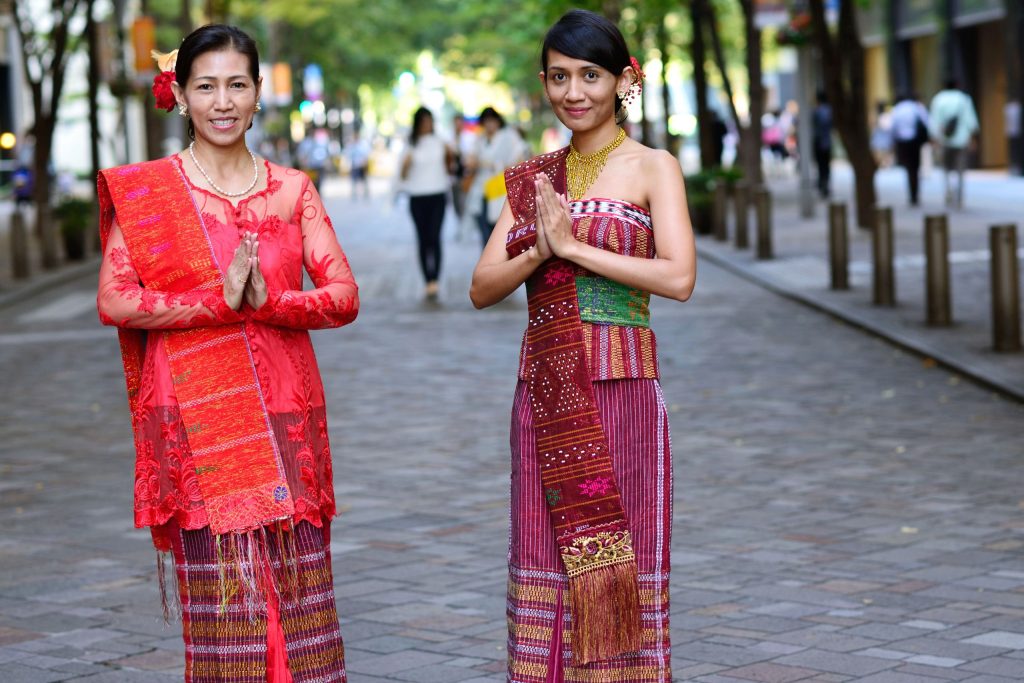What is the significance of the specific patterns and designs used in each traditional clothing piece? How have these traditional clothing styles evolved? Are there any Indonesian traditional clothing pieces still commonly worn in daily life, or are they mostly reserved for special occasions?
Indonesia, an archipelago of more than 17,000 islands, is a melting pot of cultures, languages, religions, and traditions. This rich cultural diversity is brightly reflected in various aspects, including Indonesian traditional clothing. Each region has its distinctive dress style, woven with histories, philosophies, and cultural values. This post will take you on a journey to explore fifteen different Indonesian traditional clothing, revealing the vibrant beauty of Indonesia.
Javanese Batik
Recognized by UNESCO as an Intangible Cultural Heritage of Humanity, Batik is a wax-resist dyeing technique used in fabric. Javanese Batik is renowned for its intricate patterns representing symbols and philosophies from the Javanese culture. This traditional clothing in Indonesia is worn at various events, from formal government occasions to casual daily wear.
Sundanese Kebaya
Kebaya is an iconic blouse-dress from West Java, often paired with a sarong or batik skirt. The traditional Kebaya is beautifully embroidered and adorned with intricate lace. This attire represents the elegance and grace of Sundanese women.
Balinese Endek
Endek is a type of Balinese woven cloth made using a tie-dye technique similar to Ikat. Characterized by vibrant colors and geometric patterns, it is an essential part of the Balinese wardrobe, worn during temple festivals and other ceremonial events.
Acehnese Lawon
Lawon is a traditional attire worn by the Acehnese. It comprises a headscarf, long-sleeved blouse, and long skirt, often decorated with gold embroidery. The Lawon illustrates the unique blend of Islamic and local Acehnese influences in their clothing.
Minangkabau Tapis
Tapis is a traditional fabric of the Minangkabau people in West Sumatra. It is a hand-woven cloth embroidered with gold and silver thread, used to create stunning women’s clothing, like skirts and head covers. The Tapis exhibits the skill and creativity of Minangkabau women in weaving.
Sasak Lambung
Originating from Lombok, Lambung is a traditional Sasak dress with a woven fabric sarong and a sash tied around the waist. It represents the simplicity and warmth of the Sasak community.
Buginese Baju Bodo
Baju Bodo is a traditional Bugis attire from South Sulawesi. This square-shaped blouse is usually made of sheer material, worn with a sarong, and exudes the age-old traditions and pride of the Bugis community.
Dayak Borneo Attire
The Dayak tribes in Borneo have a unique, colorful traditional dress with distinctive beadwork and feathered headgear. Often worn during harvest festivals, these costumes manifest the tribe’s close connection with nature.
Batak Ulos
Ulos is a traditionally woven cloth of the Batak tribe in North Sumatra. It is given during significant life events, such as births, marriages, and deaths. Each Ulos pattern carries a specific meaning and social significance.
Betawi Encim
Encim is a dress worn by Peranakan women of Jakarta’s Betawi culture during formal occasions. It combines Chinese aesthetics with local elements, signifying the cultural fusion in Indonesia’s capital city.
Torajan Sa’dan
Sa’dan is a traditional woven fabric from Tana Toraja, South Sulawesi. The black and red cloth with intricate motifs often forms a beautiful dress worn during Torajan rituals and ceremonies.
Makassarese Baju Bodo
Like the Buginese version, the Makassarese Baju Bodo from South Sulawesi is a loose, wide-sleeved blouse paired with a sarong. It features a distinct square cut that signifies the traditional clothing style of Makassar.
Madurese Sapo
Madurese women traditionally wear a clothing piece called Sapo, a short blouse paired with a sarong. Sapo is decorated with vibrant colors and intricate embroidery, reflecting the bright spirit of Madurese culture.
Banjarese Ampiang
Originating from South Kalimantan, Ampiang is a traditional dress of the Banjar people. It is made of silk and adorned with shimmering sequins, beads, and gold embroidery, exhibiting the Banjarese love for glamor and luxury.
Papuan Koteka and Tapis
The traditional clothing of Papuan men, Koteka, is a phallocrypt made from a gourd. Women wear Tapis, grass skirts, or barkcloth dresses. These attires represent the pristine and age-old traditions of the indigenous tribes of Papua.
Each of these Indonesian traditional clothing pieces carries a story of a region, a community, and a culture. They are not just mere costumes but a living testament to a country’s cultural diversity and the people’s resilient efforts to preserve their heritage. Whether through the elegance of the Kebaya, the intricacy of Batik, or the simplicity of the Lambung, the rich tapestry of Indonesian culture is vibrantly portrayed.
In conclusion, “15 Indonesian Traditional Clothing: The Beauty of Indonesia” is not just about the clothing in Indonesia. It serves as a cultural odyssey, shedding light on the fascinatingly diverse cultural threads that make up the fabric of Indonesian society. This journey reinforces the understanding of the depth and beauty of Indonesia and its people. As we wrap ourselves in these vibrant clothing stories, we embrace the rich cultural diversity that is the true beauty of Indonesia.


